Английский язык. Практический курс для решения бизнес-задач - [13]
The most readily-visible consequence of this was better service from the company’s suppliers. If we were working together on agreed plans and the supplier could arrange activities based around a long-term relationships then we might avoid a major problem that plagued us in the West – that just as we played off suppliers against each other, they played off their customers. They never knew what demand they may get so they sought more orders than they could, in reality, fulfil. They then reacted to screams and shortages and tried not to fall out too often with each customer. All of this meant all customers holding safety stock to cope with the repeated failures.
Partnership approach brought other benefits – if we worked as true partners then we would not need to spend so much effort in continuously expediting. We could leave behind this ludicrous situation where we had to keep asking «is that order going to be on time?». We could also expect our suppliers to warn us of problems in advance. If their key piece of plant broke down and they told us now of the impact this might have in a week or two, then we could set our own plans to work around the problem.
4. The Elimination of Variety
Variety was recognised for its cost in that it complicated the manufacturing process. A sunroof on every Toyota Corolla was not only a marketing trick but a practical manufacturing improvement as having to make two different types of roof and two different types of headlining introduced potential problems.
5. Shortened Cycle Times
One point which we all understood was that our overall cycle times for our product dictated the level of work-in-progress (WIP). If we have an average lead time of four weeks for the components going through our welding department, then we will have an average WIP level of four weeks’ worth of production.
The Japanese had addressed this in a number of ways, primarily in a fundamental redesign of factory layout and process flow. We learned that rather than have one area of the plant for presses, another full of lathes, another drills, and so on, they had switched to «focussed factories» where each area of the plant made a particular type of component. The unit making drive shafts had saws, followed by milling, turning, drilling and so on. These focussed units then brought the opportunity for multi-skilling and teamwork which helped to provide for productivity improvements – as well as significantly reducing the movement of materials through the factory.
6. «Pull»
The kanban was then the final piece in the jigsaw. One of the major benefits of kanban is that it is very simple; it is also quite visible to all concerned and its logic is clear. It worked when all the issues preventing immediate response had been addressed and was the mechanism by which a build up of stock could be prevented. The yellow card attached to the container, or the floor space between two work benches, was the signal to initiate production of more of the item. If the assembly line stopped, then the subassemblies ceased being used and no more signals were generated. This contrasted markedly with the position in Western plants where an assembly line problem quickly led to a massive pile-up of inventory with items being mislaid and damaged.
Culture
Few of the Japanese ideas for change in manufacturing were totally new. Frederick Taylor and Henry Ford had promoted many of them at the start of the 20th century. Where the Japanese did have much to teach us was in the total commitment of everybody to these new ways of working. We began to hear of stock levels being reduced to the point that every slightest problem immediately caused a major hold up, and this was actually treated as a reason for celebration. «A problem is a pearl, «we heard, meaning that finding a problem in a process was a good thing. Why? Because the problem was there and we didn’t know about it, but now we do, so we can fix it.
The Move to Lean from JIT
As we understood more of JIT we learned that stock levels and lead times were not the only targets of the Toyota Production System and its followers in Japanese industry. We began to realise that our aim must be to eliminate waste in all its forms. «What is waste?» we asked ourselves, and turned to people like Mr Ohno and Mr Shingo and were told that «waste is anything which does not add value.»
We knew already of some wastes – for example, inspection adds no value. Why not just get the process right and then we needn’t carry out this activity? Similarly, why expedite our suppliers when, if we had chosen good partners and had a true partnership with them, this would not be needed? Why move items to a dedicated packing area if we could perform the packing in tandem with the assembly operation for the product and eliminate this movement? Why move parts from one end of a factory to another, and back again, if a little more thought in laying out the plant differently might take out this activity?
So, JIT became Lean when it was recognised that parts arriving only when required and only in the quantities required is only a part of the story.
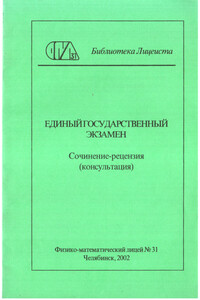
В сборнике представлены теоретические сведения о семантической структуре слова, о структуре текста, о типах речи, подобраны упражнения для анализа текста, также образцы рецензий на фрагменты рассказов из КИМов ЕГЭ.
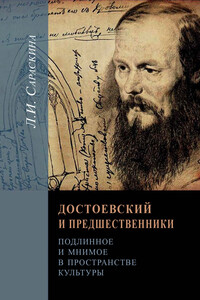
В монографии, приуроченной к 200-летию со дня рождения Ф.М. Достоевского, обсуждается важнейшая эстетическая и художественная проблема адекватного воплощения биографий великих писателей на киноэкране, раскрываются художественные смыслы и творческие стратегии, правда и вымысел экранных образов. Доказывается разница в подходах к экранизациям литературных произведений и к биографическому кинематографу, в основе которого – жизнеописания исторических лиц, то есть реальный, а не вымышленный материал. В работе над кинобиографией проблема режиссерского мастерства видится не только как эстетическая, но и как этическая проблема.

Книга посвящена изучению словесности в школе и основана на личном педагогическом опыте автора. В ней представлены наблюдения и размышления о том, как дети читают стихи и прозу, конкретные методические разработки, рассказы о реальных уроках и о том, как можно заниматься с детьми литературой во внеурочное время. Один раздел посвящен тому, как учить школьников создавать собственные тексты. Издание адресовано прежде всего учителям русского языка и литературы и студентам педагогических вузов, но может быть интересно также родителям школьников и всем любителям словесности. В формате PDF A4 сохранен издательский макет.
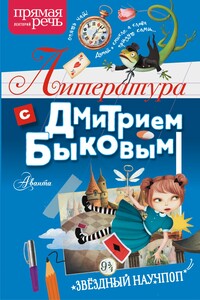
Назовите самые популярные переводные детские книги. Не сомневаемся, что в ваш список попадут повести о муми-троллях Туве Янссон, «Алиса в Стране чудес» Кэрролла, «Хроники Нарнии» Льюиса, эпопея «Властелин колец» Толкина, романы Дж.К. Роулинг о Гарри Поттере. Именно о них – ваших любимых (или нелюбимых) книгах – и пойдет речь в этом сборнике. Их читают не по программе, а для души. Поэтому рассуждать о них будет самый известный литературный критик, поэт и писатель, популяризатор литературы Дмитрий Быков. Его яркие, эмоциональные и невероятно интересные выступления в лектории «Прямая речь» давно привлекают школьников и родителей.

«Старая русская азбука» – это не строгая научная монография по фонетике. Воспоминания, размышления, ответы на прочитанное и услышанное, заметки на полях, – соединённые по строгому плану под одной обложкой как мозаичное панно, повествующее о истории, философии, судьбе и семье во всём этом вихре событий, имён и понятий.В формате PDF A4 сохранен издательский макет.
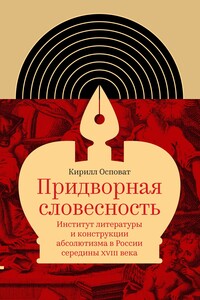
Институт литературы в России начал складываться в царствование Елизаветы Петровны (1741–1761). Его становление было тесно связано с практиками придворного патронажа – расцвет словесности считался важным признаком процветающего монархического государства. Развивая работы литературоведов, изучавших связи русской словесности XVIII века и государственности, К. Осповат ставит теоретический вопрос о взаимодействии между поэтикой и политикой, между литературной формой, писательской деятельностью и абсолютистской моделью общества.
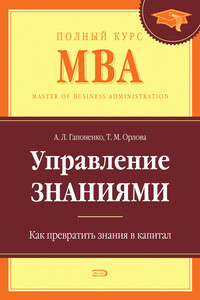
Впервые в отечественной учебной литературе рассматриваются процессы, связанные с управлением знаниями, а также особенности экономики, основанной на знаниях. Раскрываются методы выявления, сохранения и эффективного использования знаний, дается классификация знаний, анализируются их экономические свойства.Подробно освещаются такие темы, как интеллектуальный капитал организации; организационная культура, ориентированная на обмен знаниями; информационный и коммуникационный менеджмент; формирование обучающейся организации.Главы учебника дополнены практическими кейсами, которые отражают картину современной практики управления знаниями как за рубежом, так и в нашей стране.Для слушателей программ МВА, преподавателей, аспирантов, студентов экономических специальностей, а также для тех, кого интересуют проблемы современного бизнеса и развития экономики, основанной на знаниях.Серия «Полный курс МВА» подготовлена издательством «Эксмо» совместно с Московской международной высшей школой бизнеса «МИРБИС» (Институт)